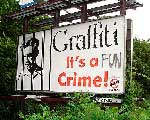Little People:
ps. Got a couple of exhibitions coming up this month. The first is in a completely unofficial capacity… I will be placing some little people around The Leonard Street Gallery for the opening night of their new show Eleven on Thursday 8th March. Eleven features, unsurprisingly, eleven artists who “…question the nature of the street art/fine art divide” (or make pretty pictures anyway) and includes Blek Le Rat, SWOON, D*Face, EINE and Elbow Toe amongst others. I am not sure if my little people will survive the opening night, but if they do you might be able to find them if you go and see the exhibition (which you should because it will be cool and you will be the coolest in the class for going). It runs from 9th March to 18th April at The Leonard Street Gallery, 73a Leonard Street, London.
More news about the second exhibition in a week or so!
Here.




















